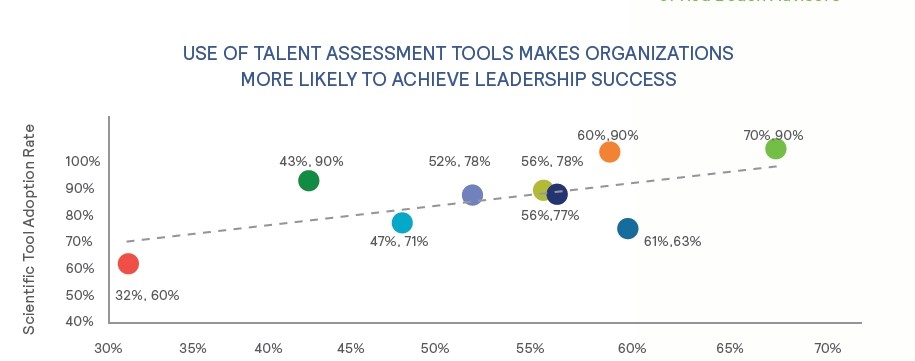Customer Experience: Are Companies Meeting their Customers’ Expectations?
In a new study done by Walker Info has revealed that by the year 2020, customer experience will become the most important brand differentiator overtaking price and product.
In the not so distant past, people had to actually pick up the phone and call customer service in order to speak with someone from support, but that times have changed drastically. Nowadays, we are constantly exposed to numerous advertisements and messages from various brands, leading up to near-instant gratification. Think about all the banners and messages you see during 11-12 hours of screen time per day. It comes as no surprise that advancements in customer service have become the most essential thing a company must do survive and evolve. In the aforementioned study done by Walker Info, it has been stated that customer experience is going to to make or break sales more than price and product.
Most companies are focusing their efforts into making everything more and more efficient. However, this need for efficiency can put in danger good customer service.
No customer is the same to another, thus, it is imperative for companies to realise this and be prepared to respond differently to distinct customer behaviours and personalities. Having a good prosperous business means that achieving a high level of effectiveness isn’t achieved by doing less in other areas of the company. Delivering the right customer service to clients should remain the key focus.
With this in mind, every company has to ask itself questions about what optimal customer experience means for them.
In a recent study done by Capgemini shows that 81% of consumers are inclined to spend more for a company that has exceptional customer experience, with more than 9% of consumers willing to spend by more than half to have access to such a positive experience.
So the question now is, what do customers want?
In a 2018 study done by Salesforce CX, 80% of people interviewed have said that the experience the company offers is as important as what they are selling, whilst 75% of people have stated that it’s much easier than ever to change the company they are doing business with. Here lie a warning and an opportunity. Given the fact that customers are very open-minded in discussing with more and more businesses and they are more than happy to switch and/or replace brands, customer experience is the focal point that will sway them one way or another.
How can businesses be sure that it is worth investing in customer experience? The proof to this question has been revealed through a study done by Forrester and Adobe, which clearly states that experience-driven companies can forecast a 60 to 90% increase in growth year-over-year in comparison with companies who do not thrive to have a higher level of customer retention and repeat purchases.
At the same time, Harvard Business Review has unravelled the fact that even a small increase of 5% in customer retention can potentially lead to a 95% increase in profits.
No matter what product or service a company offers, people will always expect a decent level of customer service. Even companies that have switched to 100% automated services are expected to have a real live person to offer assistance if required.
Let us look into EasyJet. The airline company never promised an exceptional customer service experience but that does not mean that is should be practically non-existent. EasyJet has almost managed to negatively impact the first windpipe transplant due to their refusal of allowing the courier to board the plane.
For sure, EasyJet has internal procedures that allow some exceptions, or at least have their staff trained for such situations and could have dealt with the courier’s request. The story has a happy ending, because of someone with a private jet agreed to transport the courier in the 14-our timeframe that was required for the windpipe to be safely used in an operation. However, it must be pointed out that given the seriousness of the item carried that person would have booked a different airline. This case itself simply proves the point that most customers make choices based on their own expectations.
The larger the organisation, the more field there is for discord between expectations and delivery. People expect very little in return for lower prices, but others with a stronger brand reputation cannot afford to make the same assumptions – simply imagine the impact it would have had if the courier had this experience on a British Airways flight.
Coordinating messages across the organisation is quintessential to producing a successful and sustainable customer experience. Get it right and the company will have business that is both sustainable and extremely profitable given the fact that it will be supported by an incredibly loyal customer base.
There is a real value in providing companies with the tools to carry out regular organisational assessments and this is where Great People Inside comes to your aid. Our online platform offers the best solutions and tools for your company to thrive in every type of industry and any possible situation your organisation may find itself. In terms of lowering your employee turnover rates, we recommend our GR8 Full Spectrum assessment for hiring and 360° Survey for retention. Finding the right talent, the best fit for the job and your organisation can be a very challenging task. It requires deep knowledge of your own organisation’s culture and a keen understanding of the candidate’s personality, strengths, interests, work style and other characteristics. Our technology and solutions will do the work for you, helping you find employees who can flourish and reach the highest performance required to constantly bring your company forward.
Request a free demo:
Sources:
https://www.marketingdonut.co.uk/customer-care/customer-service/the-importance-of-exceeding-customer-expectations
https://www.zingle.me/how-to-exceed-customer-expectations-in-the-mobile-era/
https://www.entrepreneur.com/article/336926




